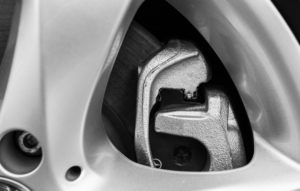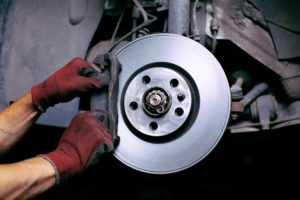Volvo Brake Repair Service and Replacement Fort Belvoir VA
Brake Pads
When you press your brake pedal and your brakes are applied, the brake pads are pushed against the brake rotor, which this is how your slow down and come to a stop, this also causes friction and heat. The cost to repair Volvo brakes are different from model to model. When calling around for estimates make sure you understand exactly what parts and service is included in your estimate for repair (keep in mind tax and fees many times are not quoted). There are many quality of brake pads from organic, semi-metallic, to ceramic with good, better and best. Lorton Auto Service only uses factory or OEM brake pads and disk rotors. This will cause the price to be about 25% more then going with economic brakes. In return you vehicle will stop as designed, lower brake dust, and no noises or pulsations. A vehicles primary safety needs are brakes, this is not a good area to try to save money, quality is the most important.
Symptoms of Wear or Failure
- Grinding or squeaking noise while braking.
- Brakes feel hard, soft, or spongy
- The brake pad wear indicator light is on.
- Brake pads must be replaced before the friction material is worn away completely. If they are not, if not you will have metal-to-metal contact between the brake rotor and the worn brake pad.
- When braking your vehicle pulls to one side.
- Brake pad material wears out over time, the pads should be inspected during every oil change.
- Most vehicles brake pads are about 12mm when new and can be driven to about 3mm of thickness. Rear pads new are about 8-10 thick mm and can be driven till about 3 mm.
- Brake pads must be replaced before the friction material is worn away completely. If they are not, metal-to-metal contact will occur between the brake rotor and the worn brake pad. This will damage the rotor, which will then need to be resurfaced or replaced.
- Brake rotors should be replaced every brake pad replacement. This insurse you will not having any noises or pulsations when applying your brakes.
- The brake fluid should be serviced every two years or 24,000 miles. Fluid should be under 2% moisture and clear in color.
Brake Fluid
Brake fluid is a used to apply pressure to your brake calipers when you apply your brake pedal. In most vehicles, the brake fluid level is monitored with a sensor in your master cylinder. In case it goes low or starts leaking a brake light will illuminate. This may cause a soft or spongy brake pedal. Brake fluid should be replaced every 2 years or 24,000 miles.
Wear Sensors for Brake Pads
Some vehicle has brake pad wear indicator sensors, this helps the driver know when it is time to replace the brake pad. Many German vehicles like Volvo, BMW and Audi have this feature. These vehicles will illuminate a light on the dash to let the driver know.
Brake Caliper
Brake calipers are critical to your car’s ability to stop and are one of the most important automobile brake parts. The job of the caliper is to slow the car’s wheels by creating friction with the rotors. The brake caliper fits over the rotor like a clamp.
Brake Hose
The flexible brake hoses attach to the metal brake lines to brake calipers. This is how fluid travels to the brake caliper to engage.
Brake Booster
The brake booster helps reduce the amount of pressure used when pressing your brake pedal. If brake boosters fail many times your brake pedal will be extremely hard to press down.


